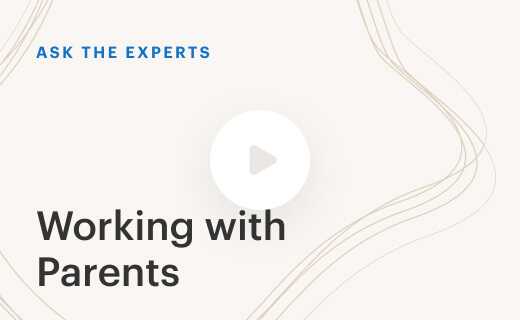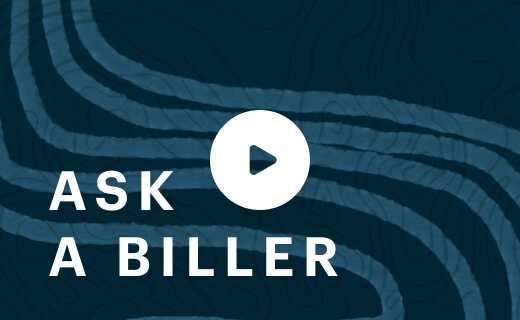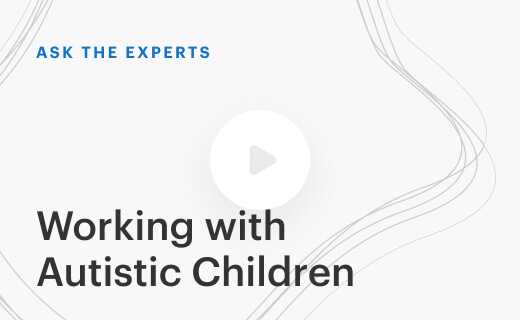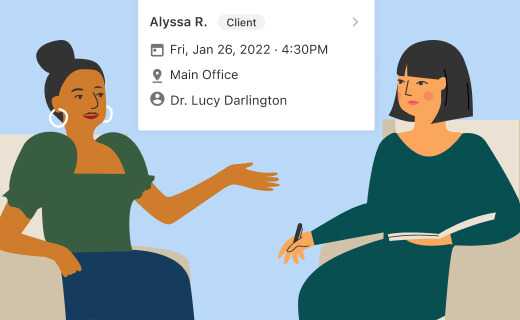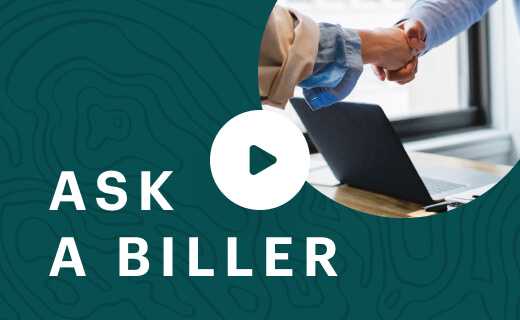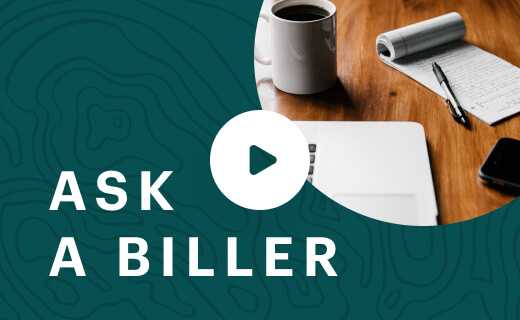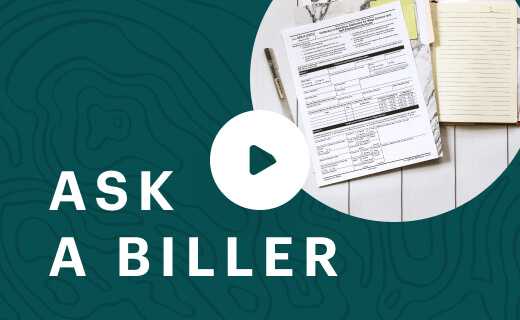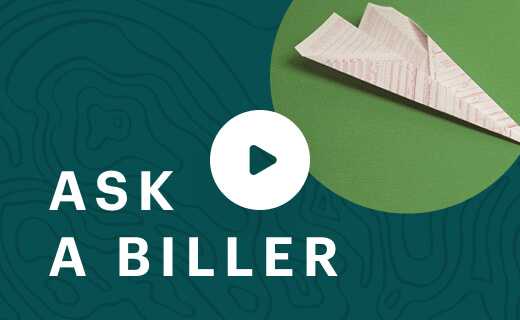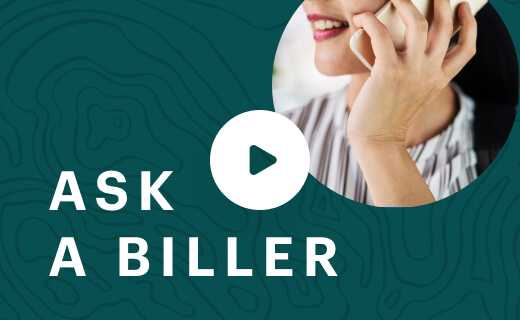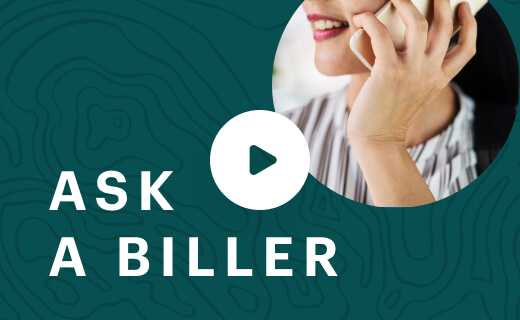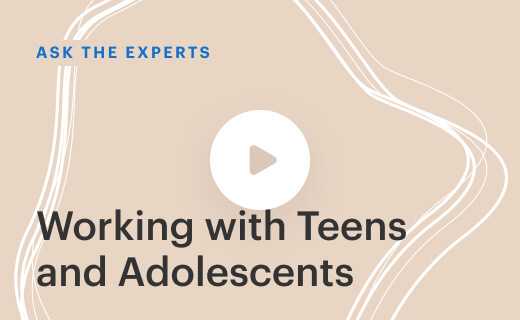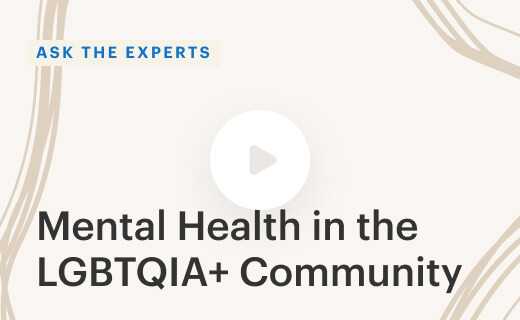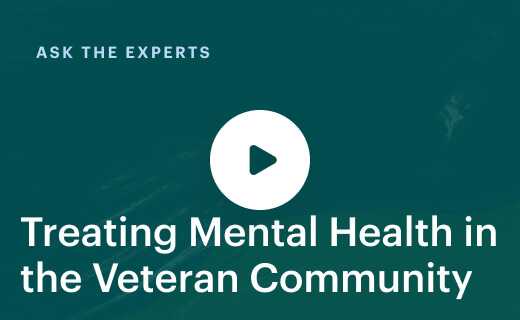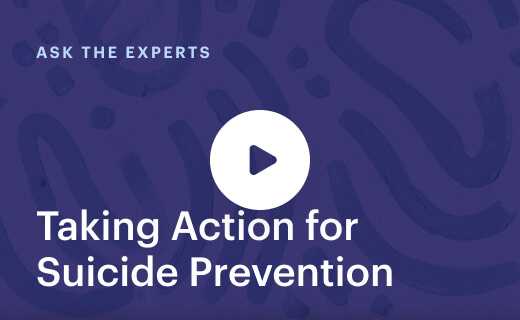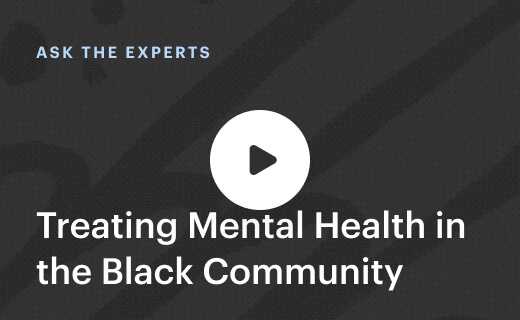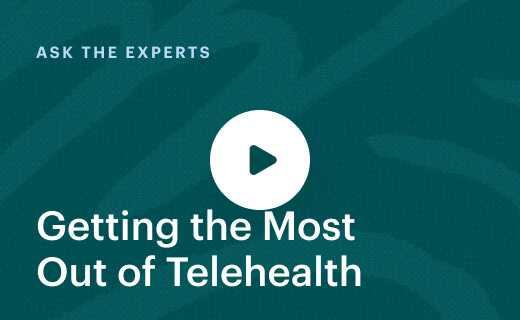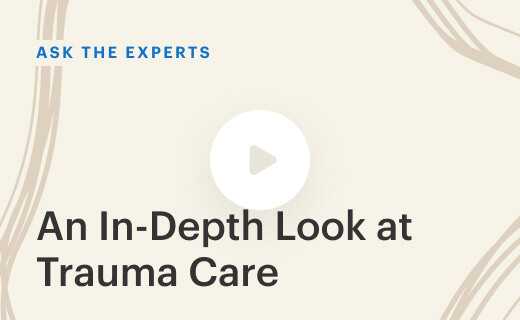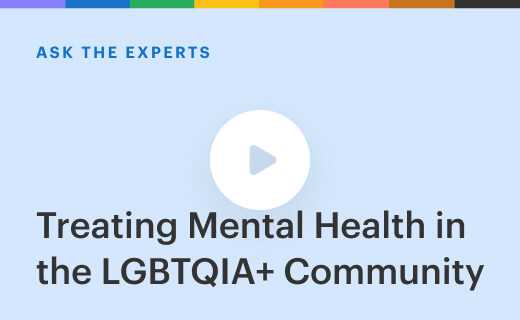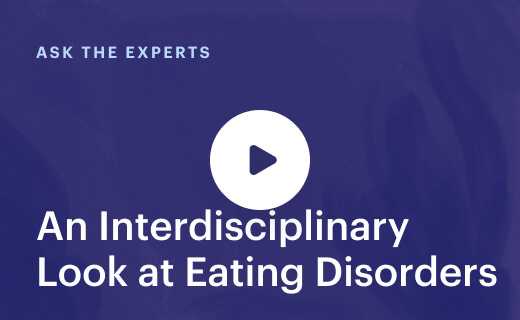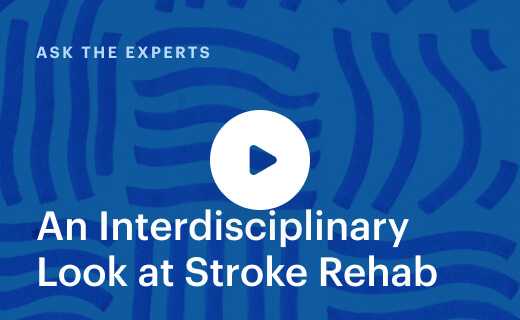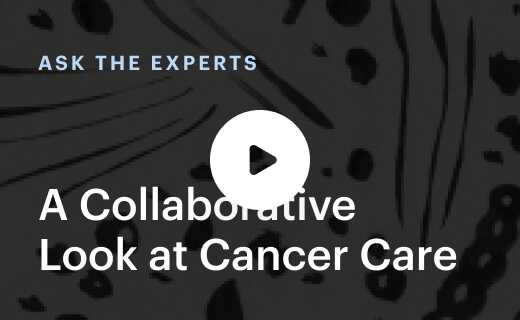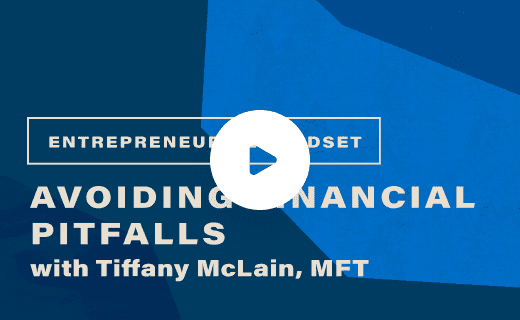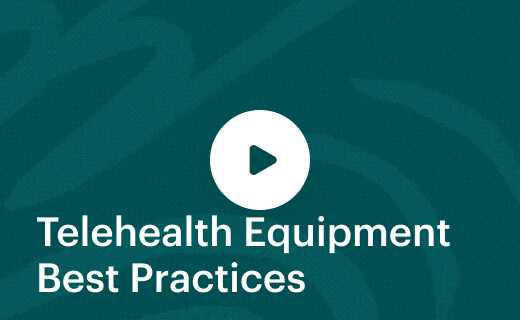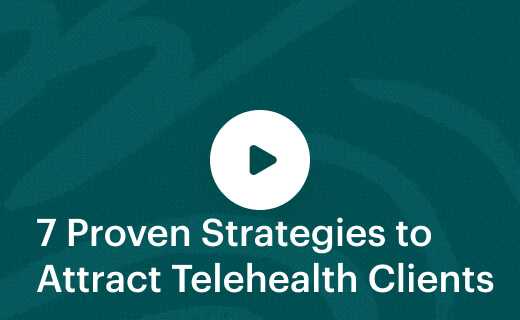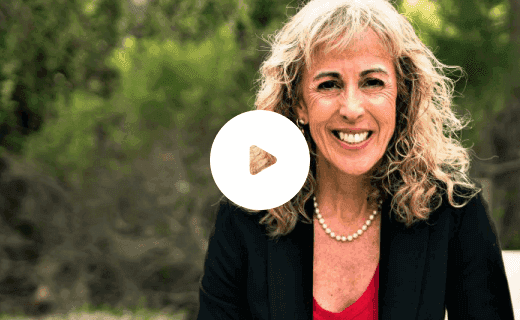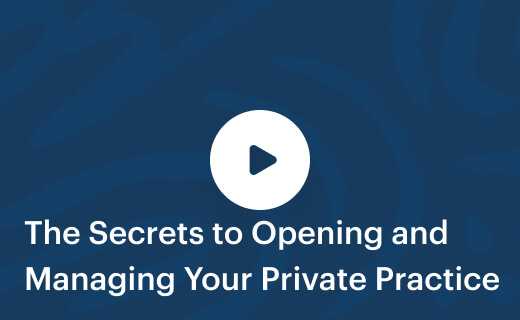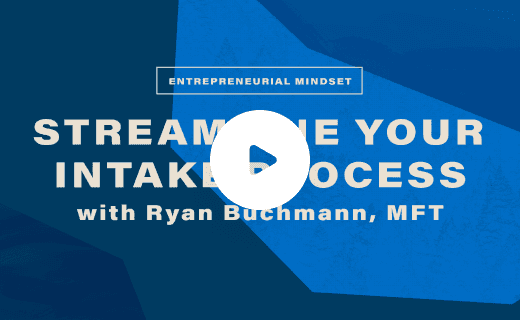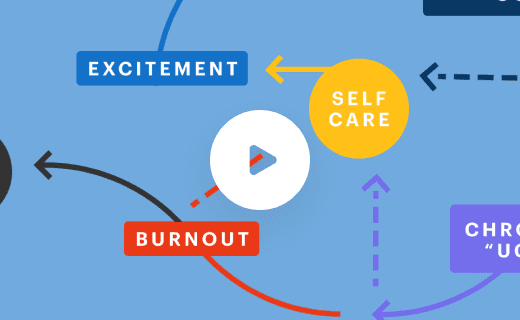Working with Teens and Adolescents
Free 30-day trial, access all this & more:
Want to know about other great webinars?
Join Dr. Jasmin Searcy-Pate, Lindsay Camp, LMFT, and Jamieko Lane, MFT as they share their experiences with providing teen counseling services.
In this webinar, they share how they got started in teen and young adult counseling, and offer important insights on how to counsel teens. They discuss specific interventions, share stories from their practices, and offer advice on which training and courses can be most helpful.
If you’ve ever considered teen counseling in your own private practice, this webinar has the resources and reassurance you need to feel prepared to offer the best possible care to this population.
- Introductions
- How did each of you get started in working with this population?
- What have you found most helpful in your work with this population?
- What is it about you or your life, or your personality, whatever it may be, that you feel like made you ready to do this work?
- What modalities work best to working with teens and adolescents?
- How important is it for the parent of the teen and adolescent to see a therapist through this process?
- When getting started with teens, what are best practices when dealing with confidentiality? What must be shared with parents?
- What are current thoughts and best practices regarding teen social media use and mental health?
- Any final thoughts you didn’t get a chance to share today?
Ben Caldwell: Good afternoon. Welcome everyone to today’s SimplePractice Ask the Experts webinar on working with teens and adolescents. I’m Ben Caldwell, I’m the education director for SimplePractice Learning. I’m honored to be joined by our expert panel today, who will answer, I think, some of the most difficult and key questions about working with teens and adolescents, particularly during this time that we’ve been doing so much work via telehealth.
To give you a sense of what the schedule will be today, we’ll do introductions for the first few minutes, and we’ll spend most of our time answering questions that were submitted to the panel and advanced by SimplePractice customers around the country. We’ll have a few minutes for final thoughts at the end. We know many of you have exactly an hour of time here to give, so we’ll make sure that we close on time, and you can get to your next appointment at one o’clock California time, or the next hour, wherever you may be.
With that, let me introduce our panel. First. We have Dr. Jasmin Searcy-Pate, who is a pediatric psychologist, children’s book, author, and educator. Dr. Jasmin, you want to tell us a little bit about you and your work?
Dr. Jasmin Searcy-Pate: Absolutely. So thank you so much, SimplePractice. Thank you all for being here. My name is Dr. Jasmin Searcy-Pate. Recently got married, about a year ago. I am residing in Chicago, Illinois, and I am a licensed child pediatric psychologist. So I work with children as young as three, all the way to 26 years of age. I also am a children’s book author and writer. I have a small practice here in Chicago, and I am a professor at Northwestern University. So thank you so much.
Ben Caldwell: It’s great to have you with us. Thank you, Dr. Jasmin. Next, we have Jamieko Lane, who is the clinical director for the Teen Therapy Center of Silicon Valley. Jamieko, do you want to tell us about you and your work?
Jamieko Lane: Yeah. Thank you so much for having us. My name is Jamieko. Like you said, I am the clinical director for the Teen Therapy Center and the Family Therapy Center of Silicon Valley. I get to work with LGBTQ teens and youth, which is a great honor, along with helping support all of my clinicians here at the practice. Super excited to be here.
Ben Caldwell: Thank you so much, Jamieko. Finally, we have Lindsay Camp. Lindsay works with teens, adolescents in the Austin area as the owner of Austin Teen Therapy. Lindsay, can you tell us a little bit about you and your work?
Lindsay Camp: Absolutely. Thank you, Dr. Ben. My name is Lindsay Camp, again, and I want to take a moment to just acknowledge some of my identities for those of you listening along, as these identities have shaped a lot of my experience in the world and in this work. So I’m a white woman. I’m straight assumed, and I am a settler on stolen land. I am the owner of Austin Teen Therapy, a group practice in Austin, Texas, where we see teens and young adults, and their families, and their systems.
Ben Caldwell: Thank you so much, Lindsay. Good to have you here. We have a handful of questions. We’ll go through these in order. But as we go, feel free, please, to make this a conversation. We want to make sure that we are building off of one another’s expertise. I’m a licensed family therapist myself, so I’m especially interested in hearing all that you all have to offer today.
Our first question comes from Bethany, who asks, “How did each of you get started in working with this population?” Dr. Jasmin, I’ll start with you, and then Jamieko, and then Lindsay.
2. How did each of you get started in working with this population?
Dr. Jasmin Searcy-Pate: Wow, that could be probably three hours of me explaining that, but it actually started during undergrad. I had the privilege and honor of being Ms. Jackson State University, and through that platform, I created a program targeted towards mental health. I worked with a young lady who had sickle cell disease, and I found her under the stairs about to, unfortunately, commit suicide with pills. I did intervene at that moment, and rode with her to the ER. At that moment, that’s when I really… I knew I wanted to be a mental health provider in a near future, but I really didn’t know as far as what I wanted to specialize.
So I ended up developing a specialty and interest in pediatric health complications through pediatric psychology. So I ended up going to grad school at Hopkins. I got my masters in counseling, and I had a great mentor during that time, who said, “You know what, Jasmin, I really think you have what it takes to go on and pursue your doctorate in clinical psychology.” So it was through her work… She was a woman of color from Columbia. It really shaped my identity as an African-American provider, but also influenced me to pursue a doctoral degree.
So that’s how I got started. Then through my experiences, that’s how I really specialized through my internship as well as post-doctoral fellowship and child and pediatric psychology. That’s the shortened story.
Ben Caldwell: Well, thank you. Jamieko, how about you? How’d you get started?
Jamieko Lane: Well, I can’t say that I have that amazing of a story. But I actually became a volunteer for the suicide crisis line here in… not here, but in Santa Cruz County. I was a bartender at the time, so I took the 2:00 AM to 4:00 AM shift. I spoke to countless teams really in crisis, and at their worst and in their deepest pain. I don’t know. It was so, I don’t know, touching that I just felt like, “You know what? This, I think, is the next step.”
To really help teens in this way was great. It was also traumatic, but it was fun, and it was just a way to really engage with teens in their moments. Then when I did grad school, I had the opportunity of working with Monterey County’s Children Behavioral Health. So I got to see all kinds of different things, and just loved it. Yeah.
Ben Caldwell: Wow. I can’t imagine what it must’ve been like doing that 2:00 AM shift on a crisis line. But I can see how it led you here. Lindsay, what about you?
Lindsay Camp: Funny enough, this is not the population I thought I would be working with. About 10 years ago in grad school, I thought I wanted to work with littles. I found myself doing my practicum site at a middle school, and I was terrified. I remembered middle school. I remembered other middle-schoolers, and I thought I wanted nothing to do with it. But I got there, and I couldn’t get enough. I loved the energy of the kids. I loved the developmental stage. So for the last 10 years, that’s been my focus.
Ben Caldwell: Wow. Well, it’s interesting to hear the diversity of experiences that led you all here. I know that for some folks, they experience working with teens and adolescents very much as a calling, and others, you sort of find your way to it after working with some other populations. So I appreciate the different pathways.
Our next question comes from Caitlyn, who says, “What are the trainings and certifications that each of you have found helpful in your work with teens and adolescents?” As a little bit of context here, we have an article on Pollen, the SimplePractice online magazine, talking about certifications generally, and saying, if they have an educational benefit for you, then by all means. But it seems like a lot of certifications don’t actually carry as much weight as we might want them to with employers or prospective clients.
Ben Caldwell: So certainly talk about certifications, but also particular elements of training. What have you found most helpful in your work with this population? Jamieko, I’ll start with you, and then Lindsay and Jasmin.
3. What have you found most helpful in your work with this population?
Jamieko Lane: I love this question. As the clinical director, I’m always looking for trainings for my team, and trying to figure out ways to help my team build up their skillset. My biggest help, I think, with working with teens… I feel like anyone who works with teens, be it a teacher, or a doctor, or a therapist, is an expert at motivational interviewing. I feel like that is like your key buy-in on how to get kids involved and engaged, and really connect with them.
Personally, I’m Team-CBT certified. It’s a training through David Burns. I love it. I love CBT as a means to really connect intellectually with kids, and just lay it out there with, “Hey, this is your thought, this is we’re doing.” Making it simple. Then I think just as a general rule, just really practicing your person-centered therapy to be able to just be grounded and genuine with kids, I find that to be the helpful things. I’ve had trainings in DBT and all the acronyms, I feel like, and I feel like I do grab a little bit from each of them, but those are the two that I really pull the most from.
Ben Caldwell: Good, thank you. Lindsay, what about you?
Lindsay Camp: Yeah, I have found… I’m only technically certified as… I’m EMDR trained, and that’s probably the only thing I could put as letters after my name. I’ve really found that eating disorder training, specifically from a social justice and body liberation standpoint, is most important given the world that we live in. We’re obsessed with diets, we’re obsessed with shrinking people’s bodies, and depressing different populations. So really digging into eating disorder training has been phenomenal for me.
I don’t name that I’m an eating disorder therapist, but I can’t help but be an eating disorder therapist because so many of our clients come in with complicated relationships with food and bodies. So that’s one that I feel is just extra important for this population.
Ben Caldwell: Yeah, that makes a lot of sense. Dr. Jasmin, what about you?
Dr. Jasmin Searcy-Pate: Absolutely. So I’m hearing training, certifications. I think all of them. I take more of a eclectic approach. So obviously, I work with the full gamut, so I can see children as young as nine months old, it depends what I’m doing, and I’m implementing theraplay. I can see an adult as old as 26, and I’m using trauma-focused CBT, motivational interviewing, DBT, EMDR, the whole gamut.
I think the one thing, and I’m thinking more of a professor mindset in training and when I’m supervising, that once you get these certifications, whether it’s motivational interviewing, whatever it is you choose for the populations that you’re choosing, that you’re getting that supervision. So if you go to the David Beck Institute, if you’re going to get your trauma-focused CBT certification or EMDR, the thing is to have a great background with cognitive behavioral therapy and getting that supervision.
And that’s just not one case. I would say someone is really called an expert or having the experience if you’ve had at least 10 exposures, or being able to really implement that with patients or families that you’re working with. I think I agree with Jamieko, having a great background in motivational interviewing when we think about teens and adolescents… That’s if they’re cognitively there, because obviously, sometimes we’re working with teens who may be socially or emotionally younger. But if you’re working with teens and adolescents, motivational interviewing is definitely important, and being grounded in cognitive behavioral therapy will be a great benefit for moving forward to the bigger modalities.
So that’s what I wanted to add. Of course, you can do that through SimplePractice. I’m putting a plug in. The Beck Institute, you have PESI, you have so many things. The most important, at the end of the day, get the training, get the supervision that you need from your organizations before you say you are an expert in that modality.
Ben Caldwell: Well, you raised this really interesting point. We’re talking about the pathways that led you here, as well as the various trainings and certifications, and that kind of thing. But I’m curious, maybe a little more broadly speaking, what do you feel like it is about you and your life or your personality, or whatever it might be, that really best prepared you for this work?
Part of the reason why I ask is, Lindsay, you were talking about this experience of being terrified of middle-schoolers and not wanting to go back to that. I think for a lot of clinicians, they probably have that same kind of memory of what middle school would be like, and the same kind of fear of working with kids. I even remember there was a journal article… This is going back a while now, but there was a journal article in one of the family therapy journals making a data-driven argument that children are often excluded from family therapy even when clinical indicators suggest that they should be included.
So all of this to say for clinicians who are hesitant or afraid of working with kids, working with adolescents. What is it about you or your life, or your personality, whatever it may be, that you feel like made you ready to do this work? Dr. Jasmin, I’ll start here with you.
4. What is it about you or your life, or your personality, whatever it may be, that you feel like made you ready to do this work?
Dr. Jasmin Searcy-Pate: Yeah. I think that’s a great question, because obviously, when we’re all in training, especially when you’re working with the little ones as young as three, they’re asking you, and sometimes teens, “Why is your hair like that? Or did you paint on your eyebrows?” They’re very transparent. You really have to not necessarily come up with the right responses, but be present in the moment.
So I find that being genuine, being open, being authentic, going with the flow. So when I was in training, I had this rigid approach. I had to do A, B, C, D. Actually, in my practice, I had to really start to be flexible with where the sessions would go, still have, in the back of my mind, the goals. But if it didn’t start at the table doing this exercise, be okay with it. I think that has been helpful and more of a curious approach as well in my practice. So that has worked for me.
Ben Caldwell: Yeah, that makes sense. Lindsay, let me go to you here, because you had talked about that experience of being terrified of middle-schoolers, which I’m sure you’re not alone in that. What was it that, in your mind, made you ready, made you a good fit for this kind of work?
Lindsay Camp: I love this question so much. I think that I had to go back and meet my inner child. I had to go back and spend some time with middle school me and high school me, and young adult me to get prepared for it. Then I could do that when I could access her, when I could give her some compassion and some safety. I could come to my teens with that as well, that being able to remember what it was like was actually a benefit, as scary as it was at times. But being able to put myself back in those shoes of everything is new, everything is big, everything is scary has been a huge asset to me in this work that I do. My team’s very serious. I believe them, and I advocate for them, and I think that that’s important.
Ben Caldwell: Yeah, I think so. I’m certainly not an expert in this area, but the folks I know who are clinicians, who work with adolescents, talk a lot about how often teenagers are just dismissed by the world around them. They’re not taken seriously. Jamieko, what about you? What made you a good fit for this work?
Jamieko Lane: I feel like the university just kind of threw me into it. So I feel like that’s a part of it as well. As a Christian, I feel like you’re led to where you’re supposed to be. I can vividly remember my first client not having any prep, just being like, “Okay, you’re starting, here you go.” And being like, “What am I supposed to do?” This poor kid just thought I was a joke, and was just like, “Nope, no, thank you.” I realized, because I was so nervous. I was just so nervous, and I had to be this perfect therapist, and I had to… here are all my interventions. I was just like, “Man, I feel like… I think if I just am real,” like Dr. Jasmin said, “If I feel like I’m real, I can do that.”
So the moment I settled into myself and found that genuine, authentic self, I felt like then I was ready, and then I was able to connect. Then it just became easy. I feel like that ability is great. So I feel like you… I’ve gotten some clients who led me down a different path and going this way and that way. Yet, every time I think back, I’m like, “Okay, you know what? We’re going to roll with it. This is what I’m going to get, this is what is going to work.”
Dr. Jasmin Searcy-Pate: Lindsay said something too, and Jamieko. I do like to take a trauma-informed approach, the safety, especially working with children period, but necessarily teens, because when they’re calming… I don’t know about when you’re working teens. Sometimes teens, they’re not open to that therapeutic alliance. Because I know sometimes parents, they want them in session. So when they meet me, they sometimes have this resistance. So we have the motivational interviewing, but I have to… when I sense or say, “You’re in a safe place, this is your safe space. Let’s kick mom or dad out right now. Let’s get to know each other.” I do feel a sense that the teens that I work with, they kind of ease, and then they start to open up, just creating that safety piece. That’s all I wanted to add.
Ben Caldwell: Yeah, that’s a great point. It leads nicely into our next question that comes from Charee, who asks, “What modalities work best to working with teens and adolescents?” I think each of you have answered this a little bit already, so I’m going to try to make it a little more specific and talk about our current tele-health-based world. One of the big challenges in therapy with adolescents, generally, is maintaining engagement. That’s a particular problem when you’re trying to do therapy via telehealth. If they get bored or irritated with you, or whatever, they can just close the computer and walk off.
So how have you been keeping your adolescent clients engaged during this really challenging time? Lindsay, I’ll start with you, and then Dr. Jasmin, and then Jamieko.
5. What modalities work best to working with teens and adolescents?
Lindsay Camp: I think I’m in a unique position that I haven’t taken on too many new clients during COVID, because there are only a few that I have never seen their legs or their lower half of their body. Most of my clients that I’ve been working with, I knew them for a long time prior to COVID. I think my answer might be different if I had a huge caseload with COVID.
A lot of my work is very framed by some sematic practice and narrative therapy, and IFS, and feminist theory. All of that translates really well to the screen as is. I used to do a lot of art and activities in my work. We can do that too still, but the work that I have been doing has worked for tele-health too, and that’s been actually kind a huge gift.
Then when there’s that resistance, when there’s a way that they don’t want to be there, I roll with that too, and can you use that as an opportunity to build a rapport to say, “Okay, cool. If you don’t want to be here, that’s okay. You don’t have to.” So that is a trust building exercise as well. So for clients that are disengaged, they truly, truly don’t want to be in therapy. I don’t force it. I tell parents that it’s kind of productive, and we go our separate ways, the door’s always open. But for the ones that do want to be there, the usual modalities are working really well for me. Yeah.
Ben Caldwell: Yeah, makes sense. Dr. Jasmin?
Dr. Jasmin Searcy-Pate: Yeah. I’m listening to Lindsay, and that was actually a good point. When I think about teens and even this virtual format, first thing I think about is Erikson’s stages of development. So I’m thinking teens are in that role, who am I versus role confusion, but also thinking about offering them choices, and choice in that autonomy is very important. So oftentimes, and I’m thinking about my own work, I have to implement creative things.
So most of my practice specifically with teens, there are teens who have chronic medical conditions, difficulties with pain management, anxiety, or executive functioning challenges. I’ve found that I’ve had to use things like the virtual background of a cloud. I’ve had to open the session up with grandpa jokes or granddad jokes, where I’m starting off with a joke to kind of loosen teens up, or we’re doing a dance to Kidz Bop, or whatnot, to really break the ice and build that rapport before we start our session.
Most of the interventions that I obviously… I’m sorry, I’m going to stand up. Sorry about that. Most of the interventions that I really pull from is ACT, which is acceptance and commitment therapy, mindfulness. I do yoga with my teens, which they really love, especially the ones who are female, and male, some of my males too. Cognitive behavioral therapy.
More of my trauma work is going to be in session, but when I’m implementing those modalities virtually, I do… like Lindsay said, I give them choice. So today, here are the goals. We’re going to get to the serious thing first, after our icebreaker, and then what should we do with the latter part of our session? So some teens may say, “I’m done, I got homework to do.” Or, “I’m not really feeling it. I’d rather be in the office with you.” For whatever reason we’re meeting virtually, I let them have that choice, and I go with it. Instead of meeting an hour, maybe just 30 minutes or even 45 minutes. It’s really going with the flow of things. So that typically works for me.
Ben Caldwell: I would imagine a lot more adolescents would come to therapy if they knew that it started with either a good joke or a dance party.
Dr. Jasmin Searcy-Pate: They love it. Yes. The virtual backgrounds, my teens love it, even if we’re doing the guided imagery. So if we’re doing yoga, I’ll change it, and they’ll change their backgrounds, and we’re starting like a grounding exercise where their favorite place use on five senses, and they love it. Or even my lame grandpa jokes, they like that too. Then we’ll exchange, and I’m like, “Okay, I’m done for it today.” Absolutely.
Ben Caldwell: Well, Jamieko, what about you?
Jamieko Lane: Well, I love hearing all of these things. I think they’re all great. Thank you.
So part of my therapy process is implementing testing at the very beginning, which is called the Brief Mood Survey. So it really allows me to see like, here’s a snapshot of how I’m feeling. So they give me this information ahead of time, so I know like, “Okay, this is where we’re going.” Sometimes my teens are like, “I don’t want to do that, Jamieko. It’s just homework.” Sometimes they’re really into it, and they can navigate their own emotions. “How am I feeling? What did upset me today?”
So I love using that. I think that that has really helped keep kids engaged. Along with, sometimes my biggest therapeutic intervention virtually is to stop doing therapy, is to really allow just a space of, “How’s it going? Spill the tea. What’s going on? Tell me what’s new with you.” Just allowing them to connect and just have a space, because truly, with the virtual world, they have just so much going on. They don’t ever really get one-on-one interactions, let alone one-on-one interactions with adults. Because in the Silicon Valley, most parents are both working, and working long hours, so you don’t really have a lot of interaction.
So just to be that consistent adult, I think has made it really accessible to then work into the deep stuff, and really get into kind of the nitty-gritty, because they know it doesn’t always have to be heavy with me. I’m really sarcastic. I know a lot about a lot of things. I know more about Fortnite than I ever thought I would. So we can talk about anything you want, and there are going to be times where I’m going to ask you the tough questions. So I try to use a lot of humor.
I will say, letting them share their screen has just made a big difference, to let them be like, “Look at this art I’m doing,” or, “Look at this cool game I just played,” or, “Here I have this meme I want to show you.” It lets them be empowered and be really bought into therapy.
Dr. Jasmin Searcy-Pate: I was going to add, that was really good. Safe space, especially my teens are like, “Oh, Doctor, I gotta tell you, this one I did. Okay. You’re not going to tell my mom?” I’m like, “Okay.” Sometimes if it’s Roblox, or they’ll share their screen and I’m looking, but I’m also scanning to make sure that it’s appropriate, what they have on their social media.
Ben Caldwell: It sounds like what all of your answers have in common is that you’re giving your adolescent clients a measure of really control of the session. So they don’t have the experience of therapy as something that they subject themselves to, but rather something that they are an active participant in and really have some say over. Is that fair?
Jamieko Lane: Mm-hmm (affirmative), yeah. Definitely. In grad school, I was taught that teens are given 800 directives a day, stand up, sit down, go to class, do your homework, whatever. So I share with my families and my teens, and just my parents alone, like sometimes they just need choice. They need advocacy in themselves.
So I don’t often let my kids be like, “Nope, we’re not going to do therapy today.” I’ll be like, “No, we’re just going to sit here. That’s cool.” But you got to see what we’ll talk about, that’s their choice. So really let them know that life isn’t about being told what to do every single minute of the day. You do get to build into an adult, which we have to make those decisions. Sometimes those decisions are scary, and that leads into anxiety in kids because they’re not given an opportunity to make choice. So I try to make our hour or 75 minutes to allow them for that, I don’t know, moment of adulting, as I call it,
Dr. Jasmin Searcy-Pate: To add to Jamieko, sometimes I ask parents, which then they back down, I’m like, ” I wonder or I’m curious to know how were you like when you were Jasmin’s age?” Then that’s when they’ll look up and reflect and kind of, “Yeah, you’re right.” Trying to reflect because I have to remind them of that when they say, “But they’ve been in session, what do they talk about?” They’re focused on goals. Really, we want to be flexible. So that was good. Yeah. Just wanted to add that.
Ben Caldwell: That’s a really nice segue, because our next question here from Ashley is, “How important is it for the parent of the teen and adolescent to see a therapist through this process?” I guess we could read that one of two ways. We could either read that as to be involved in some way in regular communication with the adolescents’ therapist, or for the parents who actually have their own therapeutic space, whether individually or in a couple of contexts with the other parent, if there is another parent or guardian in the home. How important is that in your eyes?
6. How important is it for the parent of the teen and adolescent to see a therapist through this process?
Dr. Jasmin Searcy-Pate: I know all of us are in separate states right now. So I am in Illinois, Chicago, Illinois. It will differ because currently, I’m a PSYPACT member, which is, now I’m licensed in additional 34 states. So it’s different. I really have to, I don’t know, give myself… I really know those laws. But in the state of Illinois, if you’re 12 and up, you can actually go see a mental health provider at least seven times without your parents knowing, even if there are safety concerns. Obviously, I will be the provider to get that child, but it really depends what the referral question is.
So I have families who are interested in family therapy when they come and see me, if the kids are 12 and up, and then I have some who just want Jasmin to come to sessions to learn anxiety management, pain management. So it really depends on the referral question. After I suspect… Usually, I meet with families two or three times to give assessments to the teen to determine not only what’s good, what are they reporting? What am I seeing on assessments, and what I’m hearing to really conceptualize what the treatment goals would be? Really, that’s what determines it.
So if I found out, through my assessment or evaluation, that, “Okay, these sessions are really just Jasmin sessions,” I do follow up with parents either at the beginning or the end of the sessions about the treatment goals. Not the nitty-gritty of what has been discussed, but what are the things relevant to the treatment plan that we have accomplished? So the privilege is really the teen or the pre-adolescent, unless there are safety concerns. The safety concerns, obviously, is self-harm, abusing drugs and alcohol.
In the state of Illinois, marijuana is legal right now. Obviously, teens are not… they can’t use it, but I have some teens who do. So we have to discuss that fine line, and what includes confidentiality. Now, if it deems that hey, therapy is for the whole family, then I work with the whole family. Obviously, everything is separate, but in this state, 12 and up, you actually have that confidentiality. So unless there’s a safety concern, I’m not spilling the beans.
Now, it doesn’t mean that I won’t say, “Hey, Jasmin, I’ve noticed, you smoked marijuana every day, and you’re using cocaine or heroin. I think this is really something, because I see that it’s affecting you. I think we should really talk to mom and dad about this.” So I can have those conversations, but unfortunately, the confidentiality is kept to the minor.
Ben Caldwell: Yeah, that makes sense. As you’re saying, the rules are going to be different from one state to the next, especially as it relates to when do you need parental consent versus non-consent? What sorts of things do you have permission encoded in the law to break confidentiality for versus not? Jamieko, what about the most clinical-
Jamieko Lane: I was going to say this, when it comes to different licenses, this is my bottom line, consult your malpractice, your lawyer, the bottom line. Consult your degree, your license when it comes to issues like that, if you have a question. Because we can go three to five hours or more with this conversation, but I want to just put that disclaimer out there. So sorry about that.
Ben Caldwell: Yeah, absolutely. That’s a great point. If there are questions about your particular situation about how confidentiality applies to you or in a particular case, of course, it’s going to be a good idea to consult with an attorney, especially one provided through your professional liability insurance, because they’re the ones who would be defending you if there’s some kind of complaint or a court case. Jamieko, what about the clinical aspect here in terms of do parents need to be in some form of therapy themselves if they’ve got an adolescent who is engaging in the therapy process?
Jamieko Lane: So I would like to answer both questions, if that’s okay. So here at the Teen Therapy Center, we actually involve our parents monthly. We check in with our parents once a month, and really let them know how progress is going. I’m a huge proponent in that because we need to understand what’s happening at home. We only get to see them for 50 to 75 minutes a week. We need to know what actually is going on. Because we only know as much as the teen is telling us, and sometimes that’s not the truth.
So to help us gain insight and to make sure we don’t have this tunnel vision of really just joining with our clients, to make sure there’s a bigger perspective. We’re really all about making that… Well, we let them know at the very beginning of the intake, and letting them know that, “Hey, we’re not going to spill the beans. We’re not going to tell them what’s going on. We really just want to understand, gather more information.”
But I will say that, to answer your second question then, that most of my kids are the IPs, the identified patient. That’s heartbreaking to me, to think that, “Oh, I’m the only reason that our family is fighting,” or, “I’m the only reason that I’m failing.” I think that’s hard. We, here at the Teen Therapy Center, we provide parent support. So sometimes that’s a therapeutic unit. How do you parent your child? Sometimes that’s different than individual therapy, because maybe you’ve worked through all your stuff. Maybe you’ve done your work and really healed.
But sometimes it’s hard. You don’t know what it’s like to be a teen in 2021. You have no idea. So to assume you do is just a little bit asinine. So sometimes you need help. We’re doing the best we can with what we have, and sometimes that needs a little bit of support. Also, sometimes you just need personal support, because you’re being triggered. Maybe they’re in a stage of life where your trauma happened, and they’re saying, or doing things that are triggering wounds in you that needs to be addressed.
So I think really modeling for your teen… if you want your team to be invested in therapy, you also need to be invested in therapy, because modeling is by far the best tool for change in the child. So I feel like, yes, I think it’s so important for not only the parents to be involved in the teen’s process, but for the parents to be involved in their own process.
Ben Caldwell: Lindsay, what about you? Do you agree?
Lindsay Camp: Yeah, I’m thinking about how teachers… When you ask a teacher if they like their job, they say, “Oh, my gosh, yes. I love my students, but the parents.” That’s similar for clinicians who work with teens. We love the clients we work with. We love them, love them, love them, and the parent can be a lot. So whether it’s parents that are being a lot or just regular parents, I do advocate for them to have their own place, their own therapist.
I, myself, I’m going to be in therapy for as long as I live, so I just see the benefit. My colleagues are saying there is so much that can be done in tandem. I usually tell the parents like, “You’ll get more bang for your buck if you’re also doing your work, if you also have somebody to talk to. This just all feeds off each other.” So I’m a huge, huge, huge proponent of parents being in therapy. Absolutely.
Ben Caldwell: It does seem like the more perspectives we get of what’s happening in the family, the more we can start to put puzzle pieces together. I mentioned I’m licensed as an MFT. I don’t specialize in working with adolescents, but I’ve worked with a number of families, and I’ve got a lot of colleagues who do more of that kind of work. It seems like it’s amazing how often you’ll have a teenager come in. A teenager appears to be in distress, is the IP, is displaying a lot of problematic behaviors. Then as you get to know the parents and you get to know the family dynamics, then you’re like, “Oh, I get it now. I see where this comes from. I see how this happens.”
Dr. Jasmin Searcy-Pate: Yes, absolutely. That’s where I’m with Lindsay and Jamieko. I’m like, “Okay, mom or dad, you need your own separate… you need to a whole family component.” Then I do have some parents where I’m like, “I don’t even know if, at this point, it’s conducive to involve the parent just yet. We got to explore this first before we get to this.” So it’s a tricky situation.
Ben Caldwell: Yeah, for sure. There’s a lot of complexity involved. Our next question comes from Bryan, who asks, “When getting started with teens, what are best practices when dealing with confidentiality? What must be shared with parents?” I want to go back to what we were saying earlier that the legal stuff is going to vary from one state to another. So rather than focusing on the legal stuff, I’m more interested in how each of you handles this clinically.
I would imagine if you’ve got family where the family is providing consent on behalf of the teenager, you have to work out with them what information are you going to share, regardless of… You maybe can share a lot because you’ve got permission for everybody involved, but what are you actually going to share from that teenager’s session with the parents? Jamieko, I’ll start with you, and then Lindsay, and then Jasmin.
7. When getting started with teens, what are best practices when dealing with confidentiality? What must be shared with parents?
Jamieko Lane: I let my kids know that confidentiality is my bread and butter. It’s the reason you’re coming to therapy. This is the safe space that you have. So I take it very seriously. I also let the parents and the kid, at the same time, know about my rules of the room, which is just my way of saying the limits to confidentiality. So I make it very clear, everyone understands, and we’re all on the same page.
When it comes, though, to talking with parents and sharing, I actually just check in with the kid first, like, “Hey, it’s time for me to check in with your mom, what are we talking about? What don’t you want me to talk about? What are the things that you want addressed?” That gives me an opportunity to see where the kid is at, and also to bring up the rules of the room again, but also to let them know like, “Hey, actually, that would be good for you to talk to your parent about. Let’s go ahead and just bring them into session, as opposed to me talking about that.”
So sometimes that’s the easiest way to navigate this, is just to bring everyone in the room together. My kids are really open, like, “I want you to share this. I don’t want you to share that. Can you wait maybe a week?” They’ve a lot of opinions about it. So I do really strongly hold my confidentiality.
Sometimes it’s hard because parents will ask lots of questions. They’ll be like, “Well, you know?” “That is information I am not at liberty to discuss, but I’m more than happy to get more information from you.” Parents really, as a general rule, take it to heart and understand. One of my things as well is to build rapport with the parents so you can connect with them, and so that they have a sense of trust with you that you’re holding space for their teen in a way that’s safe and really guided towards everyone’s on the same page, and holding that child in regard.
Ben Caldwell: Lindsay, how do you make that balance? How do you decide what’s going to get shared and what’s not?
Lindsay Camp: Absolutely. Jamieko, I love your language rules of the room. I’m going to borrow that. I love that.
So I go over the limits of confidentiality in the first session. I basically say my little spiel about there’s the black and white stuff, and then there’s the gray. The black and white stuff is safety concerns and things like that that we all know, and I’ll go through it. I also tell the kids, “I will ask you if you want to be present for that conversation, or not. What do you want me to modify about that?” And things like that. So I’m holding a really firm boundary, but I’m giving us much choices I possibly, possibly can.
In front of the parent and the teen, I basically say, “I’m not a hired spy. My teen will never leave here.” I type up an email to mom and dad, or mom and mom, or whoever, like, “Oh, this is what they said today. That’s BS, and it would be a waste of everybody’s time and money.” So in front of both teen and parent, I say that. Then we’ll talk about the great stuff.
Again, like Jamieko said, I’ll say, “Yeah, that seems like something parents would… it may be important for parents to know that. Are you open to that?” Again, anytime the parent sends me an email, gives me a call, I remind them, “Let me talk to your teen,” and we’ll go from there. So we’re holding that boundary as much as possible and giving so much choice whenever we possibly, possibly can.
Dr. Jasmin Searcy-Pate: No, those are great. So one of my colleagues said, “Trust, building the rapport is very important when you’re thinking about confidentiality and these issues.” I want to echo that I typically do with both of my colleagues, when I meet families, at the beginning, I’m talking about confidentiality. Those safety concerns are great areas that will warrant for me to obviously disclose that to Jasmin’s families, mom and dad.
I’m happy that I don’t have parents who reach out to me via email, because they already know. So that’s a great thing, but I think if you focus on the rapport, the relationship, the trust, that will be good. But once I talk about the confidentiality with the parents and the teen together, me and the teen we meet, and we come up with a scaling system from one to 10.
So one is the least, 10 is, oh, that’s a safety concern. I actually have that in my office on a wall for us to talk about as things come up. So obviously, the teens are… Obviously, if you’re cutting or if you’re having suicidal ideation, those definitely nine to 10 areas. But we also have the ones through seven. Me and the teen, we come up with a number where it warrants for us to bring it up together, or separately, to the parents.
So most of my teens are pretty open with that. So if they say, “Hey, I was smoking marijuana every day this week. Or I cheated on the test, the ACT, or whatever has happened.” Once the rapport, we talk about it, but it’s also something where I’m like, “I’m curious, or I’m wondering what number they should be. Should we bring this up to mom and dad? Because I think this will be helpful in these ways.”
Oftentimes, teens agree to that, and they know at the end of the day, I’m their advocate. So they use me to voice if they’re not able to. I’m that person. I’m that go-to, I’m right here with you so that we can process this together. So that typically works out when it comes to confidentiality. But the scaling and having a little temperature, either a temperature or scale, that helps mostly with my teens.
Ben Caldwell: I really like that idea of having the scale that you can determine, alongside that adolescent, how far up the scale does it need to be before we share it? I think that’s a really cool idea.
Dr. Jasmin Searcy-Pate: I was going to add one more thing. We all work with teens, and teens, this is the impulsivity, they’re trying things out. During that first and second session after the scaling, I ask the parents and the teen together, “What are the things outside of cutting, outside of the known safety concerns, the things that absolutely we need to bring up?”
So some parents may say, “Hey, if my child is having sex, or if they’re doing drugs or doing…” And we have to agree on that in that aspect, in ways that we would talk about that together should that come up. So that’s something else that I do to close that loop too.
Ben Caldwell: We’ve addressed a couple of other questions on here. I wanted to skip us ahead to question nine from Kathryn, “What are current thoughts and best practices regarding teen social media use and mental health?” This is an area that has gotten more complicated, I think, in terms of the underlying research over the past few years, where the relationship between social media use and mental health is a thing. There is a relationship there, but it’s proven to be more complicated than, I think, a lot of us initially thought.
So how do you work with this with your adolescents? How do you parse out when social media is a problem versus when it’s neutral, versus when it’s potentially beneficial? Lindsay, I’ll start with you, and then Dr. Jasmin, and then Jamieko.
8. What are current thoughts and best practices regarding teen social media use and mental health?
Lindsay Camp: Oh, gosh, there’s so much here. Two things are coming up for me. One is the advice that was laid out in The Social Dilemma, which if you haven’t seen it, I highly recommend. The advice there being that, one, get phones and tablets screens out of kids’ rooms at night as a boundary, and then push social media as far out as you can. Their recommendation is high school, 16. That’s a tough piece. Then also having some boundaries about the time, and having a collaborative conversation about how much time do you think you need or want on social media? And having a back and forth discussion about that.
The other piece of it that’s coming to my mind is this idea that our social media is a space that we occupy much like our homes, our rooms, and we like that space to do good for us. So I wouldn’t decorate my room with posters of things that triggered me or upset me. Similarly, in the space that we occupy online, if there are things that you notice are online and it doesn’t feel good, and you’re thinking about comparisons and things like that, then maybe it’s time to clean up that space, and make it a space that isn’t triggering. So those are the two things that come to my mind when I think about social media and teens, is the boundaries that are needed, and then also the mindfulness and the intention behind it that’s needed.
Ben Caldwell: I really like that analogy of treating it as a space that you occupy. Dr. Jasmin, what would you add?
Dr. Jasmin Searcy-Pate: Yeah, it is tricky. It’s like the social media has been like the Me-Too Movement, like, “Jasmin, I found out I had ADHD, or depression, or anxiety because I saw this, saw this, and it’s like, everything is a connection here.” Meeting my teen, the boundaries, like Lindsay said, is very important. Unfortunately, a lot of my teens… I’m not sure about you all… by the time they’re nine or 10, they’ve already been introduced to TikTok, all of these social media outlets, Roblox.
I have literally met a teen who lived the virtual world, and was connecting with her peers through this. All of them were sitting at a table and Roblox in their world, talking about depression through chats, and cutting, and all of that. So that’s the reality, and feeling connected. However, I’m going to go back to Lindsay’s point, when I talk to teens, I do say, “Hey, I’m wondering, does this trigger you? So you’re in therapy, now you’re learning skills, but then when we go back to this world, whether it’s Roblox, TikTok, peer exchange, wherever you’re connecting, are you triggered to cut? Are you triggered or having these ideations that you shouldn’t be having, and it kind of increased by going back to this place?”
So I have those discussions, and we weigh out the pros and cons for cognitive behavioral therapy, or interventions to explore, “Hey, let’s do our analysis here. Is it beneficial? Should we cut back? What’s realistic here? So that we won’t compare, so that we won’t be triggered in any ways.” So it’s a tricky thing. It’s like a pro, but then it’s a con of things. So I’ve seen the whole gamut when working with teens and this population. That’s what I want to say.
Ben Caldwell: I can imagine. Jamieko, I would imagine that you have as well.
Jamieko Lane: I’ll have to echo what both Dr. Jasmin and Lindsay said. I think there are just so many benefits to it though. When you’re in school, you have Instagram chats or Snapchat chats to connect on school projects and homework, and things like that. So how can you take it away from kids?
I still don’t understand why kids just don’t text, but that’s beyond me. It’s just weird to me. So there are so many benefits to it. It also allows them to find passion and to use it as a platform for their passions and interests, and their arts, and the things that they want to do. So there are very good things about it, especially virtually. How else did our kids stay connected when we couldn’t, literally couldn’t, see people face-to-face?
So I’m a huge proponent of social media. I’m also a huge proponent of curating your social media. Lindsay, I’m going to have to steal that from you, the analogy of decorating your room, because it’s true. I work with a lot of kids who struggled with disorder eating, because in the queer community, it’s a big thing. So how do you find people that are going to lift you up? How are you going to find people who are motivating and mentors to you? It’s not any different than affirmations. Why would you speak to yourself that way? You’re going to spend four hours on social media, can you at least make it beneficial? Because there are benefits to it, and a learning platform.
Just to allow them to understand, can you live without it? Can I challenge you to spend two hours and not be on your phone? How does that feel? What is that like? What do you do to replace it? Just to allow that decrease in need for instant gratification, those likes, and those things for validation. Really connecting it for them to allow them external motivation and validation versus internal. How do you change that? How do you change the story and the script of what you’re seeing?
Our kids have literally lived with social media their entire lives. We haven’t. We know how… well, maybe we don’t know how to, but I will assume we know how to live without it. They don’t. Literally it’s been around for 18, 21 years, some of them. So you got to embrace it, and really see the positives of it. Like Lindsay said, I’m a huge proponent of not having a TV, even, in your room because it does mess with your sleep. So if it’s possible… But everyone has to do it. It can’t just be the kids. It has to be the parents too. We’re going to all check in our cell phones. It has to be a whole family unit thing.
Ben Caldwell: Yeah, that’s fantastic. You mentioned earlier about how parents today don’t know what it’s like to be a teenager in 2021. This is a great example, right? When we were teenagers, this was not part of our experience, certainly not in the same way.
So want to thank each of you. Again, I’ll give you the opportunity for some final thoughts here in a second. First, I wanted to mention, for folks who are interested in learning more about the current complex research about how social media and mental health interact, we’re doing our first SimplePractice Learning live event on September 17th at 11:30 AM Pacific on social media and mental health. That’s with Alexander Chris, a psychologist who specializes in this area. More information on that event… which does provide 1.5 hours of CE for those who qualify under the approvals that we hold. More information on that event is available at simplepracticelearning.com.
Before we call it a day here, I wanted to give each of you an opportunity for a final thought. Also, if you could include, for folks who want to know more about you or connect with you, what’s the best way for them to do that? Lindsay, I’ll start with you, then Dr. Jasmin, then Jamieko.
9. Any final thoughts you didn’t get a chance to share today?
Lindsay Camp: Absolutely. Thank you all so much for sharing this space together. This is really wonderful. I love encouraging folks to work with teens. So many people are scared of it like I was. It’s really rewarding work. So I hope this is helpful.
As some final thoughts, to follow me on my Instagram at Austinteentherapy.com, and also sign up for our mailing list where we will be… we’re going to be launching some trainings, specifically trainings for working with teens and their families, the people that care for them. So go on my Instagram or my website, www.austinteentherapy.com, and sign up for our mailing list there.
Ben Caldwell: Thank you so much, Lindsay. Dr. Jasmin.
Dr. Jasmin Searcy-Pate: Yes. So again, to echo my colleagues, thank you so much for joining us for this hour of conversation. You can also follow me on Instagram at Searcy_Pediatrics, or you can visit me at searcypediatrics.org to find out more about what I do, including I have a children’s book out call Olivia Takes a Mental Health Day, just to normalize mental health in, specifically, BIPOC communities, so communities of color.
I also have a retail line that affirms mental health in youth called Young, Gifted, and Mentally Well to change the narrative of mental health, and what it means to be whole from a holistic perspective. My final thoughts is get the trainings, reach out to each of us if you want to consult, or if you just have questions. Just enjoy your day. So thank you.
Ben Caldwell: Thank you so much, Dr. Jasmin. Jamieko?
Jamieko Lane: Once again, thank you everyone for joining, and thank you, Dr. Caldwell, for facilitating the conversation. We appreciate it. I think I’ll start with my final thoughts. Teenagers aren’t as scary as everyone says they are, as long as you can be yourself. Be genuine, be authentic, be direct. They don’t really like when you beat around the bush. They think you have an agenda. Make sure you come to session without the agenda, and let them lead the room.
Also, if you’re funny, that helps, I’m just saying. [inaudible 00:55:46] to have as a therapist. But yes, try it, get some certifications, do some role-plays with people. I think those are also really great when you’re in. If you don’t have supervision because your licensed, find a consult group that you can do some role-plays and really connect with people. If you’d like to connect with me, you can look on our website, it’s teentherapycentersv, for Silicon Valley, dot com. So we would love to… I’m sure all of us would love to help if you have any questions.
Ben Caldwell: Well, thank you all again so much. Really appreciate your time, your wisdom, your expertise. This is a wonderful hour. I’m very grateful to each of you. On behalf of all of us at SimplePractice to everyone in attendance, thank you so much for your time as well today. I’m Ben Caldwell, and on behalf of all of us, have a wonderful rest of your day. I hope to see you soon. Take care.
Build the best practice you can.
Our resources to help you & your practice take the next step.

